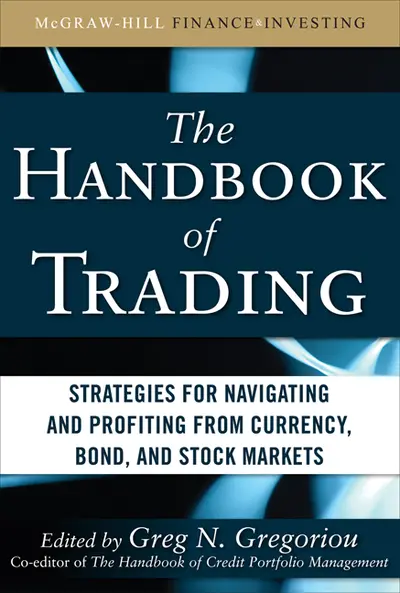My Account Details

ISBN10: 0071743537 | ISBN13: 9780071743532

Step 1 . Download Adobe Digital Editions to your PC or Mac desktop/laptop.
Step 2. Register and authorize your Adobe ID (optional). To access your eBook on multiple devices, first create an Adobe ID at account.adobe.com. Then, open Adobe Digital Editions, go to the Help menu, and select "Authorize Computer" to link your Adobe ID.
Step 3. Open Your eBook. Use Adobe Digital Editions to open the file. If the eBook doesn’t open, contact customer service for assistance.
Make the post-meltdown markets work for you,using the unparalleled insight of today’stop global investing experts! “This book provides a collection of papers that examine tradingexecution, technical trading, and trading strategies, as well as algorithmsin different markets (equities, forex, fixed income, exchange traded funds,derivatives, and commodities) around the world. This is particularly relevantgiven the recent explosion in trading volumes.” Tarun Chordia, R. Howard Dobbs Chair in Finance,Goizueta Business School, Emory University “This book uses a number of well-respected authors in the area of asset trading.It provides a comprehensive analysis of trading-related issues coveringmomentum trading, algorithmic trading, the use of technical trading rules,strategies for ETFs, and the role of trading volume.” Professor John Cotter, Director of the Centre for Financial Markets,University College Dublin School of Business, University College Dublin “The Handbook of Trading is a good reference tool for both practitionersand academics. The contents cover a wide range of topical issues.” Professor Robert McGee, Director of the Center for Accounting, Auditing, and Tax Studies,College of Business Administration, Florida International University About the Book: Given today’s market volatility, eventhe most advanced investors can beunsure of their next move. Ratherthan rely on one or two individuals who claimgeneral knowledge on any given investingtopic, you need the advice of professionalswho have spent their entire careers developingreal expertise on more focused sectors ofthe market. The Handbook of Trading is the only bookavailable that provides just that.Greg N. Gregoriou has amassed forty of theworld’s top academics, researchers, and practitionerswho explain how to make today’smarkets work for you. With this highly technicalbut ultimately practical guide, you haveaccess to a broad array of trading strategiesthat will put you light years ahead of thecompetition—regardless of the state of themarket. From technical analysis and momentumtrading to algorithmic and FOREX trading,The Handbook of Trading introduces you totechniques and insights never before published,each of which has been rigorouslyback-tested and analyzed. Chapters include: Performance Leakage and ValueDiscounts on the Toronto StockExchange Lawrence Kryzanowskiand Skander Lazrak Trading in Turbulent Markets: DoesMomentum Work? Tim A. Herbergerand Daniel M. Kohlert Profitability of Technical Trading Rulesin an Emerging Market DimitrisKenourgios and Spyros Papathanasiou Leveraged Exchange-Traded Fundsand Their Trading Strategies NaratCharupat The Impact of Algorithmic TradingModels on the Stock Market OhannesG. Paskelian Applying critical lessons learned from the financialcrisis of 2008–2009, the contributorsexplain how to approach turbulent marketenvironments and adjust your trading methodologiesaccordingly. The Handbook of Trading is the go-to guidefor financial professionals seeking profits intoday’s currency, bond, and stock markets. Correlating PowerPoint slides and readingquestions created by the contributors appear onhttp://www.mhprofessional.com/handbookoftrading.
Need support? We're here to help - Get real-world support and resources every step of the way.